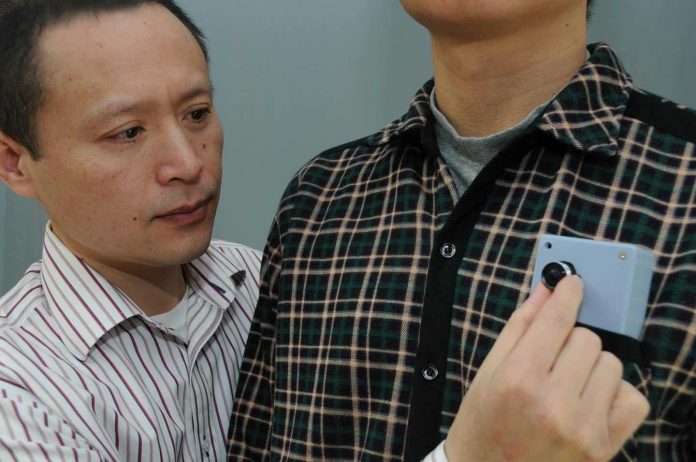A wearable device has been created by researchers at the Massachusetts Eye and Ear Infirmary which can help people with low vision avoid colliding into obstacles.
People who have lost some of their peripheral vision because of conditions such as glaucoma, brain injury, or retinitis pigmentosa may bump into objects and be at risk for falls.
The device emits a sound when an obstacle is near, warning the visually impaired person that a wall or object is nearby. Researchers say that therapeutic vision restoration treatments are still in the early stages of development, so assistive technologies can help people with vision loss deal with mobility issues. They feel that the device could help patients with various levels of vision loss avoid colliding with high-level obstacles.
“We developed this pocket-sized collision warning device, which can predict impending collisions based on time to collision rather than proximity,” said the senior author Gang Luo, Ph.D., an associate scientist at Massachusetts Eye and Ear/Schepens, and Assistant Professor of Ophthalmology at Harvard Medical School. “It gives warnings only when the users approach to obstacles, not when users stand close to objects and not when moving objects just pass by. So the auditory collision warnings given by the device are simple and intuitively understandable.”
“We tested the device in a density obstacle course to evaluate its effect on collision avoidance in people with peripheral vision loss,” Luo said. “To show its beneficial effect, we compared the patients’ mobility performance with the device and without it. Just demonstrating the device can give warning for obstacles in walking would not prove the device is useful. We have to compare with a baseline, which is walking without the device in this case.”
Researchers gathered data from 25 patients with hemianopia or tunnel vision regarding their walking speed and the number of collisions they had as they navigated an obstacle both with and without out the device. When participants used the device, collisions were reduced by 37 percent while the walking speed barely changed. No patient collided with obstacles more times while using the device than without it. Dr. Luo says the next step is to test the usefulness of the device in patients’ daily lives during a clinical trail study.








